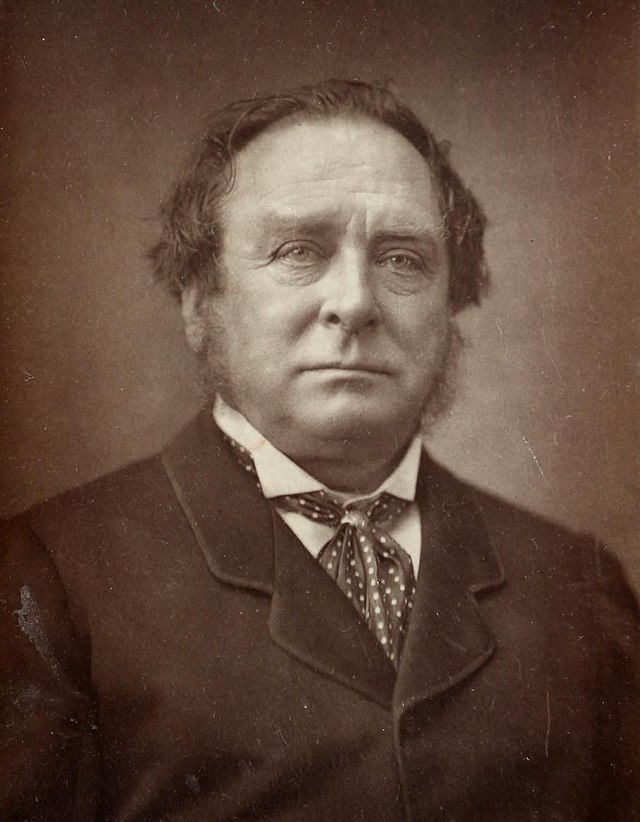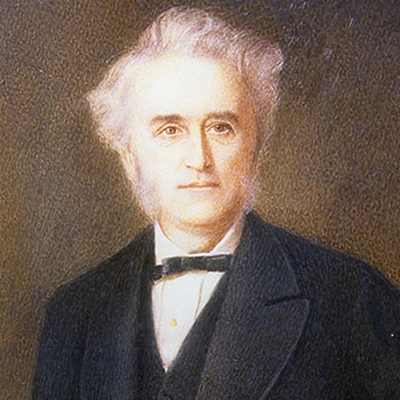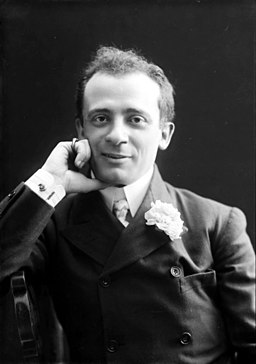Who Discovered Alzheimer's, Parkinson's, Down Syndrome, and Much More?
By: Archiradhi Communications
Introduction
Have you ever wondered about the names of the countless diseases afflicting us?
Some names are straightforward. Breast cancer and lung cancer directly allude to the affected parts of the body. Others, like ‘West Nile virus encephalitis’, are tied to geographical origins.
What about conditions like ‘Alzheimer's disease’ and ‘Parkinson's disease? Despite their widespread impact, the origins of the names of these diseases are less transparent.
Many of the names are eponymous, bearing the names of medical pioneers who dedicated themselves to comprehending and disseminating insights about these conditions.
Next, consider ‘Lou Gehrig's disease’ and ‘Fregoli syndrome’. Lou Gehrig, a baseball icon, lends his name to a deadly ailment, and Fregoli, a master impersonator, is associated with a distinctive syndrome.
In the following paragraphs, we'll explore several of these illnesses and shed light on the individuals whose names they carry. As we delve into this topic, let's take a moment to reflect on the countless individuals grappling with these conditions, along with the challenges their families and communities face.
Alzheimer's disease
The disease
Alzheimer's disease is the most common cause of dementia. A majority of those affected are over the age of 75, with a significant portion being women.
The symptoms of the disease, including memory loss, seizures, and impaired communication, tend to worsen over time. Ultimately, the severe loss of brain function can lead to severe complications such as malnutrition, dehydration, and even death.
The person

Alois Alzheimer
Alois Alzheimer (1864-1915), hailing from Markbreit in Bavaria, Germany, pursued his medical studies at universities in Berlin and Wurzburg. His professional journey led him to Frankfurt's Asylum for Lunatics and Epileptics, where his path would intersect with destiny.
In 1901, he encountered Auguste Deter, a 50-year-old female patient at the asylum. She had been admitted due to escalating memory loss, aggressive behavior, and a progressive state of confusion. Auguste remained under Alzheimer's care until her passing in 1906.
During this period, Alzheimer meticulously documented Auguste's symptoms and observed peculiar abnormalities in her brain during autopsy. These anomalies included the atrophy of brain cells and the reduction in size of regions associated with memory, cognitive function, and language.
Alzheimer presented his groundbreaking findings, titled ‘Peculiar Severe Disease Process of the Cerebral Cortex’ at the 37th Meeting of South-West German Psychiatrists in Tübingen. Unfortunately, the medical community showed little interest at the time.
Undeterred, Alzheimer persisted in his analysis of similar cases. Recognition finally arrived when his colleague Emil Kraepelin, a renowned psychiatrist, introduced the term ‘Alzheimer's Disease’ in the 8th edition of his influential textbook, ‘Psychiatrie A’.
Tragically, Dr. Alois Alzheimer, the name behind Alzheimer's disease, passed away from congestive heart failure at the relatively young age of 51, leaving behind a profound legacy that continues to shape our understanding of cognitive disorders.
Parkinson's disease
The disease
Parkinson's disease takes its toll on specific brain regions responsible for maintaining balance, posture, and movement. It ranks as the second most common neurodegenerative disease after Alzheimer's disease.
The person

James Parkinson
James Parkinson (1755-1824), a native of London, England, embarked on a journey that embraced both medicine and paleontology. Apprenticing under his father, a family physician, he delved into the realms of medical practice, geology, and even politics, championing various social causes.
1n 1817, aged 62, Parkinson authored a seminal work, ‘An Essay on the Shaking Palsy’. This 66-page booklet marked a watershed moment as Parkinson meticulously detailed the symptoms of ‘shaking palsy’, now synonymous with Parkinson's disease.
However, his groundbreaking work largely fell on deaf ears in the contemporary medical community. It took nearly half a century for the name to gain recognition. Jean-Martin Charcot, a renowned French neurologist, advocated renaming ‘shaking palsy’ to ‘La Maladie de Parkinson'.
Dr. James Parkinson, the eponymous figure behind Parkinson's disease, passed away at 69 due to a stroke. His name lives on, symbolizing the intricate relationship between pioneering research and a disease that has profound implications on life itself.
Down syndrome
The disease
A condition dreaded for its impact on children, Down syndrome brings terrible mental and physical challenges for those affected. Around 3,000 to 5,000 children are born with this syndrome every year.
The person

John Langdon Down
John Langdon Down (1828-1896), born in Cornwall, England, embarked on an extraordinary career path. Initiated into his family's trade as a grocer and apothecary by the age of 14, it was an encounter with an intriguingly different girl at 18 that steered him toward medical studies.
Academically exceptional, Down graduated summa cum laude. Despite a promising academic path, he chose a different course-becoming the medical superintendent at the ‘Asylum for Idiots’ in Earlswood, Surrey. This establishment was among the largest in England.
After years of transformative work, Down established his own center devoted to children with mental disabilities. He was supported by his equally dedicated wife. Throughout his professional journey, Down penned numerous scientific papers that would ultimately link his name to the condition now known as Down syndrome.
Dr. John Langdon Down, the visionary intrinsically linked to Down syndrome, passed away at 67. Tragically, one of his grandsons was born with this very condition.
Edward's syndrome
The disease
Children afflicted with this rare genetic condition experience a multitude of birth defects and poor growth. Survival beyond the first year is almost impossible.
The person

John H Edwards
John Hilton Edwards (1928-2007) born in Dulwich, England, nurtured aspirations of following in his father's footsteps and becoming a doctor. Pursuing his goal, he studied medicine at Cambridge University. He later worked at Birmingham University for 27 fruitful years.
Edwards had an unwavering passion for human genetics. In 1960 his efforts paid fruit when he identified the syndrome that now carries his name.
John Edwards was equally recognized for his sense of humor, captivating anecdotes, and a legendary quality of absentmindedness. Dr. John Hilton Edwards passed away at the age of 79, succumbing to prostate cancer.
Crohn's disease
The disease
Crohn's disease triggers inflammation and irritation within the digestive tract. It is marked by intense abdominal pain, malnutrition, and weight loss. Young adults are typically affected.
The person

Burrill Bernard Crohn
Burrill Bernard Crohn (1884-1983) was born in New York, USA, to Jewish emigrants from Europe. His father's struggles with severe digestive issues ignited Crohn's passion for medicine. Excelling at Columbia University's College of Physicians and Surgeons, he continued to learn through an internship and residency at Mount Sinai Hospital.
In 1932, a pivotal point arrived when Crohn, along with two colleagues, published a landmark paper titled ‘Regional Ileitis, a Pathological and Clinical Entity’ in the Journal of the American Medical Association.
While previous researchers had explored the topic, it was Crohn and his colleagues who left an enduring impact. Subsequently, his name became closely associated with this disease.
Dr. Burrill Bernard Crohn, a shining light in the medical landscape, died at the age of 99.
Huntington's disease
The disease
Huntington's disease is a rare genetic condition wherein the nerve cells within the brain progressively degenerate. This results in uncontrolled facial, hand, and foot movements that worsen with time.
The person

George Huntington
George Huntington (1850-1916) was born in East Hampton, New York, USA. Following in the footsteps of his father and grandfather, he studied medicine.
In 1872, not yet 22 years of age, Huntington spoke on chorea (abnormal involuntary movements) at the local Meigs and Middleport Academy of Medicine. He concluded his lecture by highlighting what he considered a medical curiosity, a new type of chorea that he had observed in his father's clinical practice.
The lecture was enthusiastically received by the audience. Huntington went on to publish his findings in the Medical and Surgical Reporter in the same year. Sir William Osler, one of the greatest physicians of that era, considered the article to be an excellent description of the disease.
This marked the inception of ‘Huntington's chorea’. Over time, the name changed to ‘Huntington's disease’.
George Huntington's legacy echoes through the annals of medical history, eternally tied to the disease that bears his name.
Dr. George Huntington died of pneumonia at age 66.
Déjerine-Klumpke's Palsy
The condition
Déjerine-Klumpke's Palsy is a rare condition that affects newborns, it happens during a very difficult vaginal delivery when one of the nerves leading to the newborn's arm gets injured. The damage results in partial paralysis of the child's forearms and hands.
The person

Augusta Déjerine Klumpke
Augusta Déjerine-Klumpke (1859-1927) was born in San Francisco, USA, but spent most of her life in Europe, especially France.
Overcoming the challenges that women of her time faced, she joined medical school in Paris and simultaneously worked at the Muséum National d'histoire Naturelle (The Museum of Natural History).
This remarkable woman became one of the earliest female doctors in France. Specializing in neurology, Augusta Déjerine-Klumpke went on to become the first female president of the Societé de Neurologie de Paris (Paris Neurological Society).
In 1885, Déjerine-Klumpke described the condition that now carries her name, marking her lasting contribution to medicine.
Dr. Augusta Déjerine-Klumpke died of breast cancer at the age of 68.
Canavan disease
The disease
Canavan disease causes the affected brain to deteriorate, becoming spongy over time. This rare genetic disorder typically emerges within the first six months of a child's life and is more prevalent among the Ashkenazi Jews.
The person

Myrtelle May Canavan
Myrtelle May Canavan (1879-1953) was born in St. John's Michigan, USA. After her initial schooling in Michigan, Canavan pursued her medical education at the Women's Medical College in Pennsylvania.
Her interactions with Dr. Elmer Southard of Harvard Medical School sparked a lasting interest in neuropathology.
One of America's earliest pathologists and neuropathologists, Myrtelle May Canavan worked at Boston University. She was also the de facto curator of the Warren Anatomical Museum at Harvard Medical School for over two decades. ‘De facto’ since the dean of Harvard Medical School objected to a woman being the head of the museum.
In 1931, her contributions took a pivotal turn when she described a case involving a sixteen-month-old child's autopsy. The findings revealed a soft and spongy area within the brain, an essential piece in understanding Canavan disease.
Dr. Myrtelle May Canavan died at age 74 due to Parkinson's disease. The mark she left continues to shape our understanding of Canavan disease and neuropathology.
Lou Gehrig's disease
The disease
Lou Gehrig's disease, also known as amyotrophic lateral sclerosis (ALS), is a progressive neurological disorder that affects nerve cells in the brain and spinal cord. This condition leads to the gradual degeneration of motor neurons.
Affected persons experience muscle weakness, loss of motor function, and eventually paralysis. There is currently no known cure for ALS, but supportive care and therapy can help manage its functions.
The person
Henry Louis ‘Lou’ Gehrig (1903-1941) was a renowned baseball player and is best known for his time as the first baseman for the New York Yankees. He was born in New York City and began his professional baseball career in 1923.
Gehrig's exceptional skills, remarkable durability, and the number of consecutive games he played earned him the nickname ‘The Iron Horse’.
Tragically, Lou Gehrig's life was cut short by ALS, which would later become known as Lou Gehrig's disease. His diagnosis and subsequent decline in health raised awareness about this condition, helping bring attention to the formidable challenges faced by those affected by ALS.
Gehrig's farewell speech at Yankee Stadium in 1939, often referred to as the ‘Luckiest Man’ speech, is especially memorable and moving. Despite his illness, Gehrig displayed courage and dignity. His legacy continues to inspire people to this day.
Fregoli syndrome
The disease
Fregoli syndrome, named after the Italian vaudeville actor Leopoldo Fregoli, is a rare psychological disorder. It is characterized by the delusional belief that different people are actually the same person in various disguises.
This misidentification syndrome can lead affected individuals to believe that their family members, friends, or even total strangers are a single tormentor attempting to deceive or harm them.
The term ‘Fregoli illusion’ was first introduced by French doctors Courbon and Fail in 1927. They based the name on examining a delusional Parisian woman who believed that famous actresses were disguising themselves to pursue her.
The person

Leopoldo Fregoli
Leopoldo Fregoli (1867-1936) was an acclaimed Italian vaudeville actor known for his exceptional ability to rapidly change his appearance and persona during performances.
He gained widespread recognition for seamlessly transitioning between various characters. Oftentimes, he gave the illusion that he was multiple individuals on stage.
Conclusion
This exploration of eponymous disease names provides a glimpse into the remarkable lives of medical pioneers and celebrity patients whose legacies continue to shape our understanding of health and well-being.
From Augusta Déjerine-Klumpke's trailblazing contributions to the grit of Lou Gehrig, these narratives continue to inspire. They remind us that behind every medical term is a human story- a narrative of dedication and resilience.




